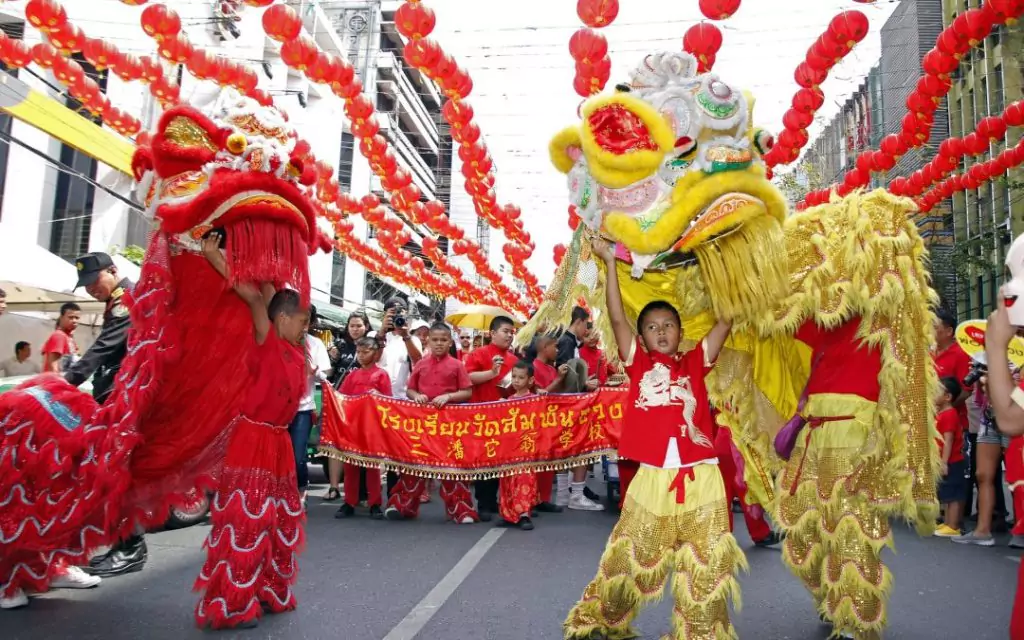Welcome to 1Byte’s guide to the Lunar New Year 2024! As a leading cloud & hosting provider in Cambodia, we’re excited to share with you the top traditions and customs of this significant celebration. The Lunar New Year is a time of renewal and reflection, filled with rich traditions that span across various cultures. In this article, we’ll delve into the fascinating customs that make the Lunar New Year such a unique and vibrant festival. So, join us as we embark on this journey of discovery, and let’s welcome the Year of the Dragon together!
The Significance of Lunar New Year 2024
Let’s dive into the significance of the Lunar New Year 2024. This year, we welcome the Year of the Dragon. The Dragon, fifth in the Chinese zodiac cycle, symbolizes strength, ambition, and good fortune.
People born in the Year of the Dragon are believed to embody these traits. They are seen as powerful and lucky individuals, full of life and vitality. The Dragon year is also associated with the element of Wood in 2024. This adds a layer of significance, as Wood symbolizes growth and renewal3.
The Lunar New Year, celebrated according to the lunisolar calendar, generally falls between January 21 and February 20. This year, it will happen in a couple days, which is February 10. It’s a time for families to gather, pay respect to their ancestors, and welcome the arrival of spring.
So, the Lunar New Year 2024, the Year of the Wood Dragon, brings with it the promise of strength, ambition, good fortune, and renewal. It’s a year that many look forward to with anticipation and excitement1. As we celebrate the Lunar New Year, let’s embrace the spirit of the Dragon and the promise of new beginnings.
FURTHER READING: |
| 1. 1Byte x ITSTEP Academy: Amplifying Student Engagement! |
| 2. Victory Over Genocide Day 2024: Resilience and Hope in Cambodia |
| 3. 10 Traditions to Embrace on Christmas & New Year |
Top 7 Lunar New Year Traditions
Let’s explore the top traditions associated with the Lunar New Year12. These customs, steeped in history and cultural significance, bring color and excitement to the celebrations.
- Dances, Parades, and Street Parties: Vibrant parades featuring dragon and lion dances are a hallmark of Lunar New Year celebrations. These lively events symbolize good luck and prosperity for the coming yea.
- Honoring Ancestors and Elders: Paying respect to ancestors and elders is a key tradition. This act of reverence strengthens family bonds and honors the past.
- Wearing New Clothes: Donning new clothes, often in red for good luck, signifies a fresh start. It’s a fun way to welcome the Lunar New Year.
- Posting Spring Couplets: These are poetic verses written on red paper and posted on doors. They express hopes for prosperity and happiness in the new year.
- Giving Red Envelopes: Filled with money, these envelopes are given to children and unmarried adults. They symbolize the transfer of good fortune.
- Spring Cleaning: A thorough cleaning of the house before the Lunar New Year represents a wish to put away old things, bid farewell to the old year, and welcome in the new.
- Eating Special Foods: Certain foods are eaten during the Lunar New Year because of their symbolic meanings. For example, fish represents abundance, while dumplings symbolize wealth.
These traditions, each with its own cultural significance, make the Lunar New Year a truly unique and vibrant festival. As we celebrate the Lunar New Year, let’s embrace these customs and the rich cultural heritage they represent.
Specific Lunar New Year Customs for Cambodians

Let’s delve into the specific Lunar New Year customs for Cambodians. While Lunar New Year isn’t a traditional holiday in Cambodia, it’s celebrated with much enthusiasm. This is largely due to a sizeable proportion of the population having Chinese roots.
- Three-Day Celebration: The Lunar New Year in Cambodia is a three-day public holiday. Cambodians stop work to return to their home communities and celebrate.
- Honoring Buddha: Cambodians light candles and burn incense sticks at shrines. They pay homage to offer thanks for Buddha’s teachings.
- New Year’s Customs: Cambodians wash their face with holy water in the morning, their chests at noon, and their feet in the evening before they go to bed. This ritual is believed to bring good luck.
- Charity Contributions: On the second day of the New Year, people contribute to the less fortunate. This act of charity helps the poor, servants, homeless, and low-income families.
- Bathing Buddha Images: On the third day, Buddhists wash the Buddha statues and their elders with perfumed water. This symbolic practice is thought to wash bad actions away.
These customs, each with its own cultural significance, make the Lunar New Year a truly unique and vibrant festival in Cambodia. As we celebrate the Lunar New Year, let’s embrace these customs and the rich cultural heritage they represent.
Leverage 1Byte’s strong cloud computing expertise to boost your business in a big way
1Byte provides complete domain registration services that include dedicated support staff, educated customer care, reasonable costs, as well as a domain price search tool.
Elevate your online security with 1Byte's SSL Service. Unparalleled protection, seamless integration, and peace of mind for your digital journey.
No matter the cloud server package you pick, you can rely on 1Byte for dependability, privacy, security, and a stress-free experience that is essential for successful businesses.
Choosing us as your shared hosting provider allows you to get excellent value for your money while enjoying the same level of quality and functionality as more expensive options.
Through highly flexible programs, 1Byte's cutting-edge cloud hosting gives great solutions to small and medium-sized businesses faster, more securely, and at reduced costs.
Stay ahead of the competition with 1Byte's innovative WordPress hosting services. Our feature-rich plans and unmatched reliability ensure your website stands out and delivers an unforgettable user experience.
As an official AWS Partner, one of our primary responsibilities is to assist businesses in modernizing their operations and make the most of their journeys to the cloud with AWS.
Conclusion
As we wrap up our exploration of the Lunar New Year 2024, it’s clear that this celebration is a rich tapestry of traditions and customs. From the vibrant parades to the intimate family gatherings, each aspect of the Lunar New Year carries deep cultural significance. Whether you’re celebrating the Year of the Dragon in Cambodia or elsewhere, understanding these customs can enrich your own Lunar New Year experience. So, as we usher in the Lunar New Year, let’s embrace these traditions and the sense of renewal they bring. Here’s to a prosperous and joyful Lunar New Year!

